From those two columns of numbers, chapter and verse numbers, we can extract all this
1. 57 odd 57 even numbers
2. sum of all odd = som of all chapters
sum of all even = som of all verses
3. golden ratio between non-repetetive and repetetive numbers wich is 1.618
4. symmtrical organisation of the numbers
5. Chapters and verses together make big numbers wich are divisible with 19
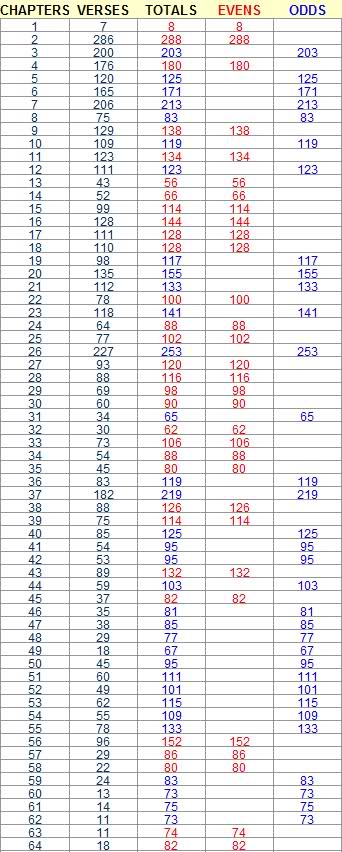
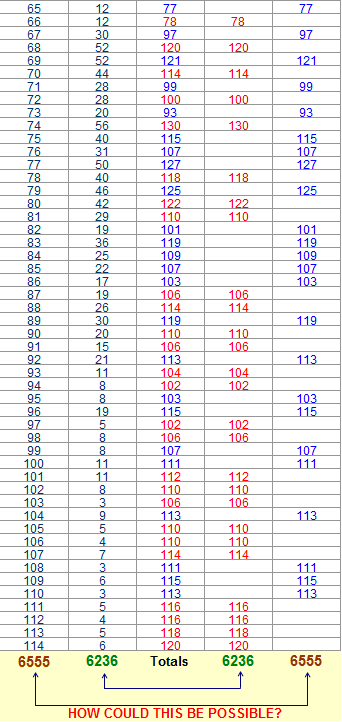
Here, we have repetitive
numerical values from the table above
for example, chapters 85 and 99 have
same nummerical value 107, we summerize all repetitive numerical values
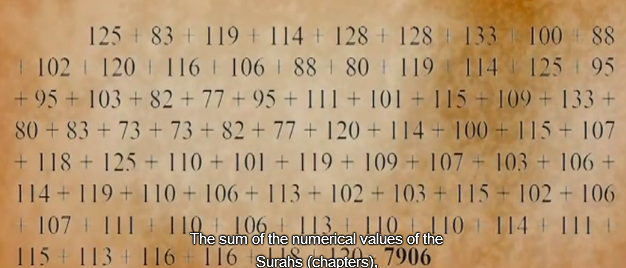
Here,
we have non-repetitive numerical values, and we summarize them also

We can clearly
see golden ratio between repetitive and non-repetitive numerical values from
this table
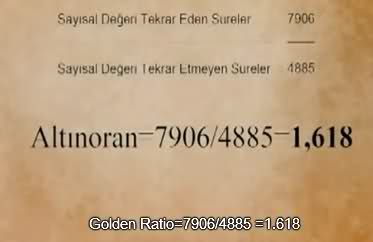
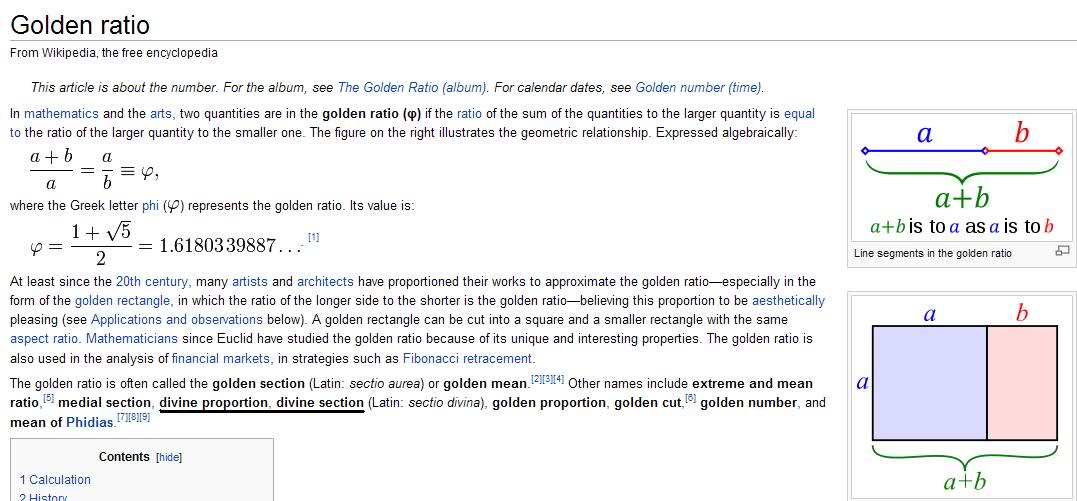
Point 4. Symetric organisation of the book
(Sequence number of Chapter)-(Verses)
=
4 combination:
odd-odd
odd-even
even-even
even
odd
example first chapter Fatiha has sequence number 1 and 7 verses,
then it is in ODD-ODD section
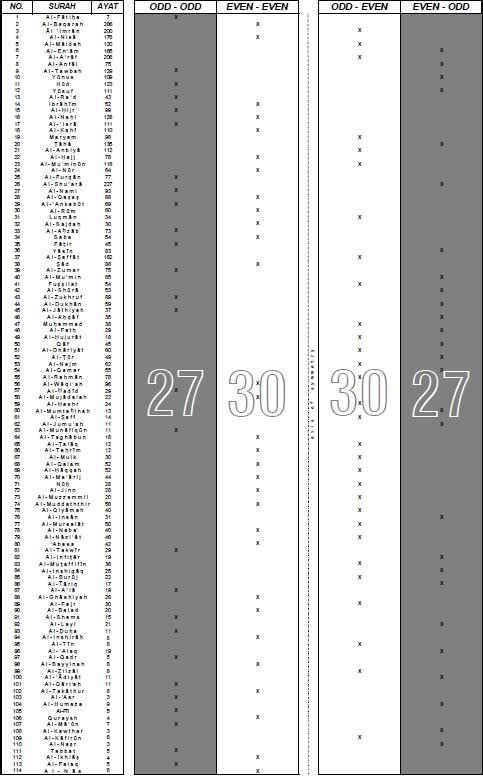
Homogenus are ODD-ODD,
EVEN-EVEN
Non-homogenus are odd-even, even-odd
It is also
constructed simmetrically
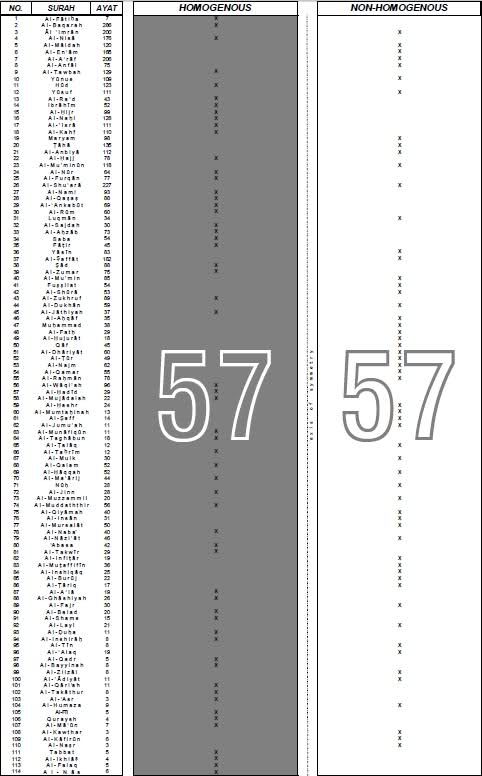
Now we divide the book in half,
first part of quran 57 chapters, and second part quran 57 chapters
even
this is also symetrical between homogenus and non-homogenus
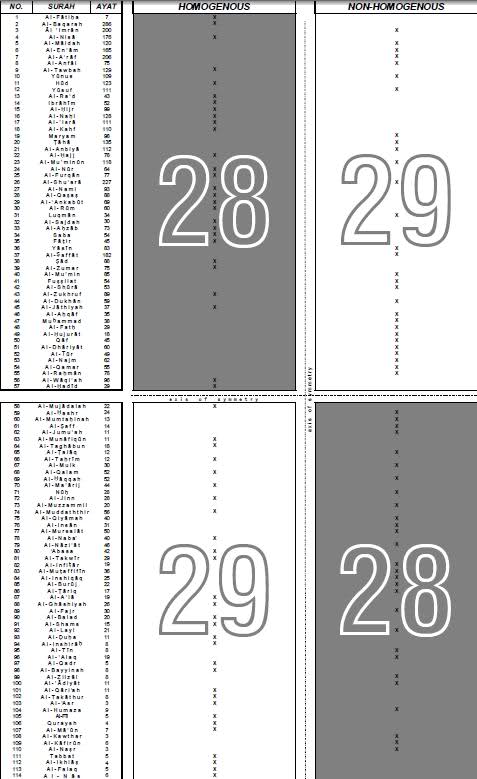
Chapters of which the number of verses are greater than sequence number
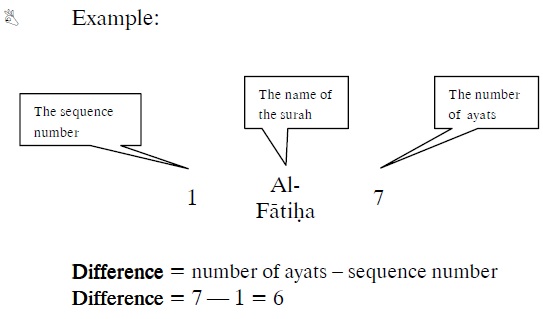
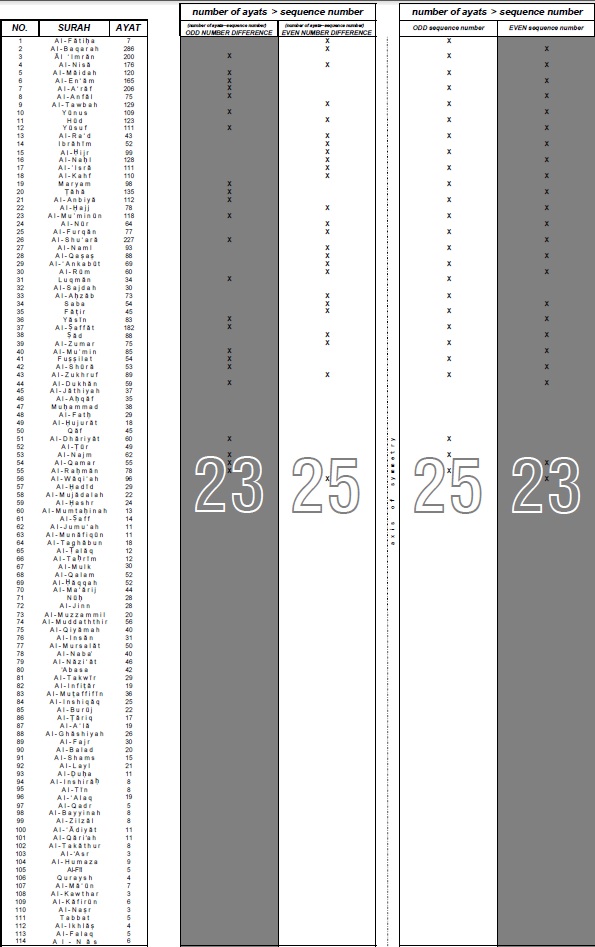
Chapters of which the number of verses are smaller than sequence number

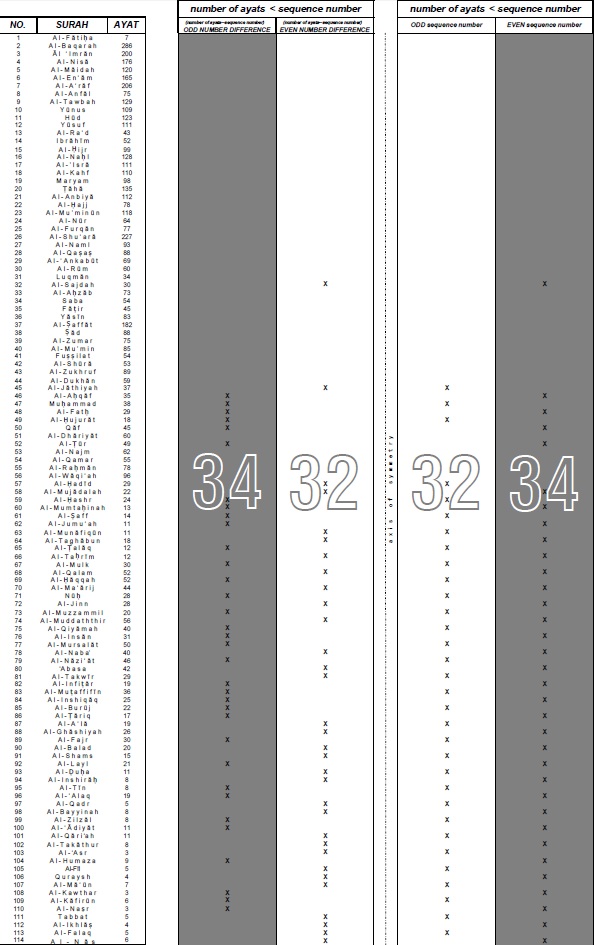
Sequence Numbers Set and Number of Verse Set
example: Chapter/Surah with sequence nr 3, nr of ayats/verses 3 can be found at seequence nr 108 and 110
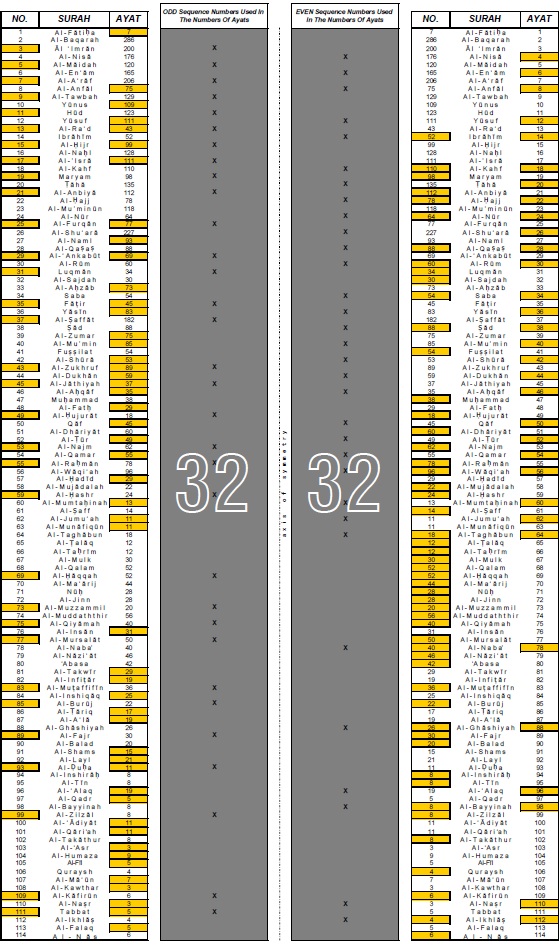
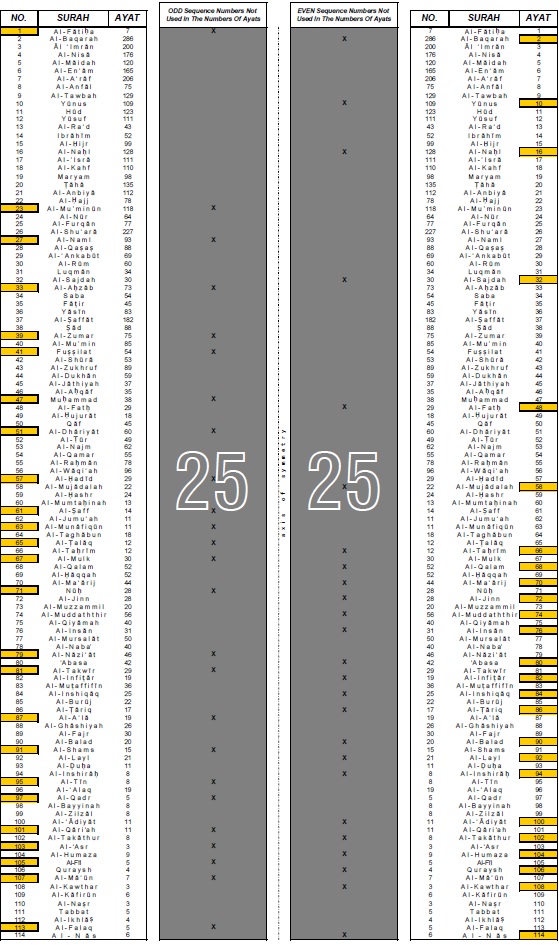
The numbers which are divided by two and not divided by three
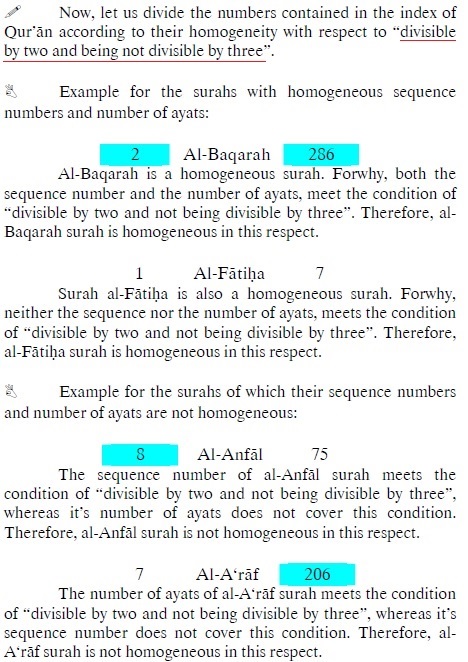
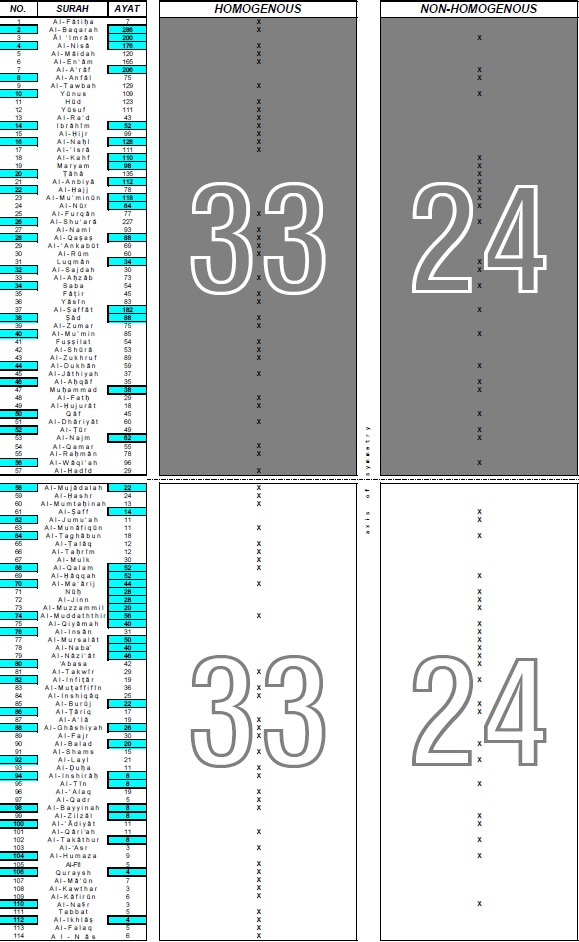
The numbers which are divided by three and not divided by two
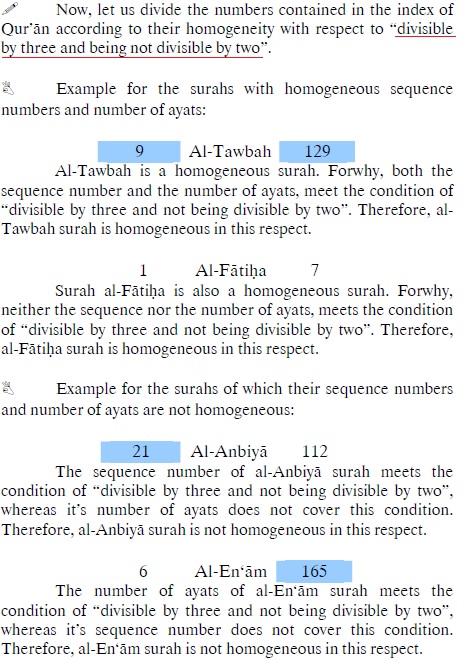

The numbers which are neither divisible by two nor by three
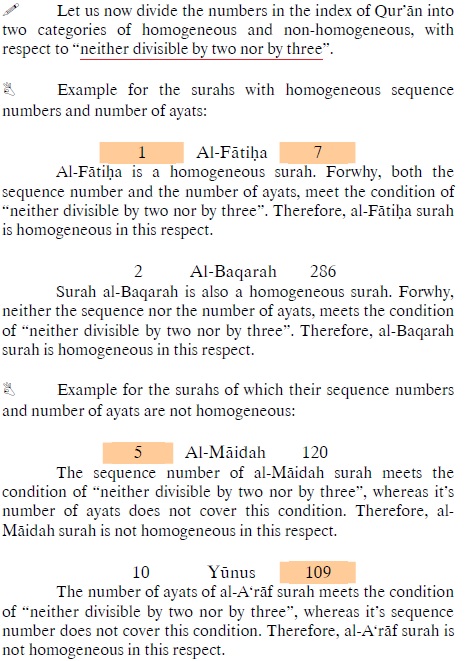
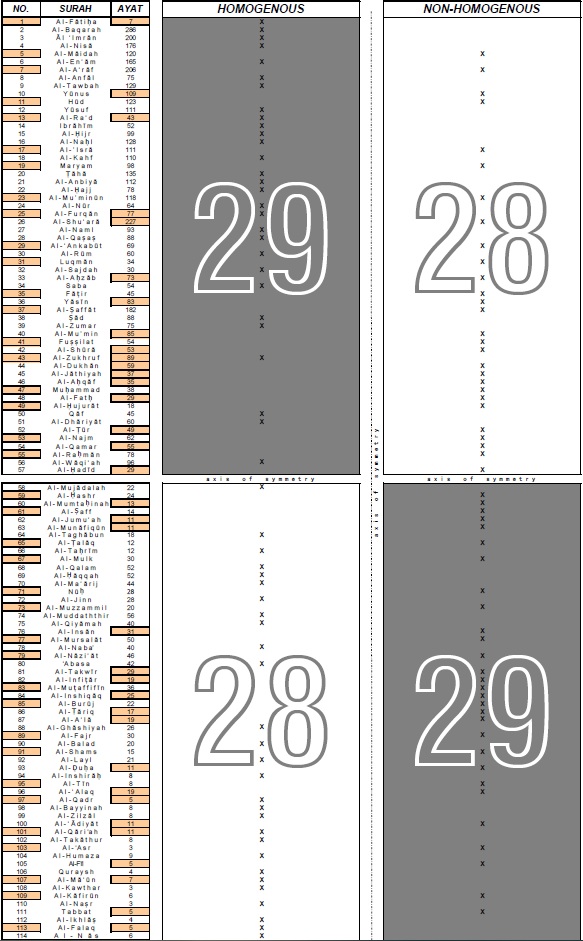
Point number 5
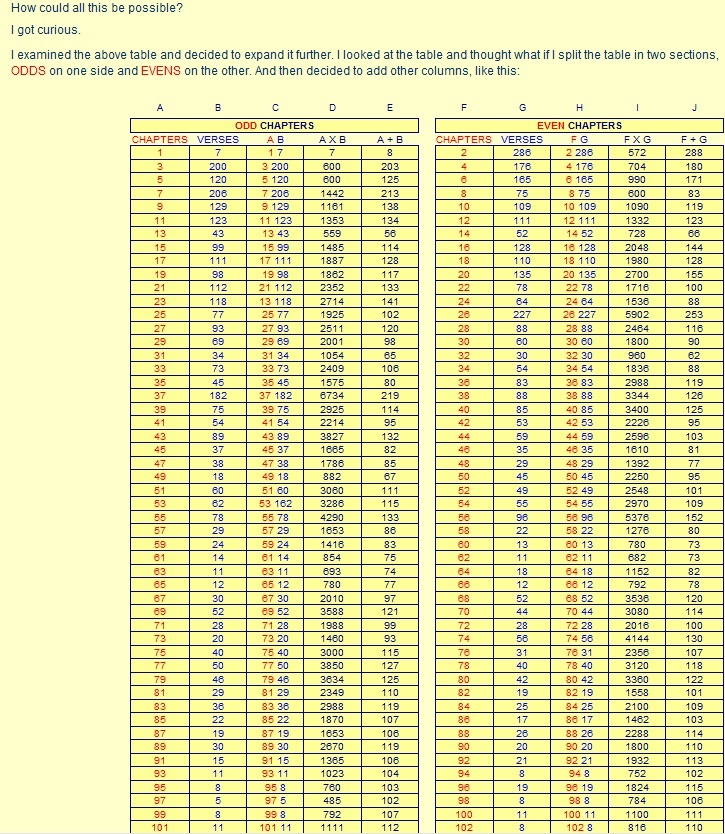


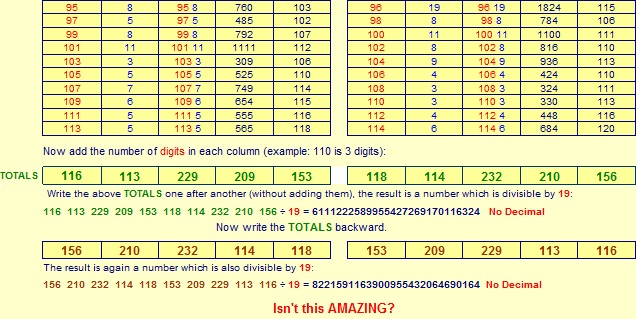

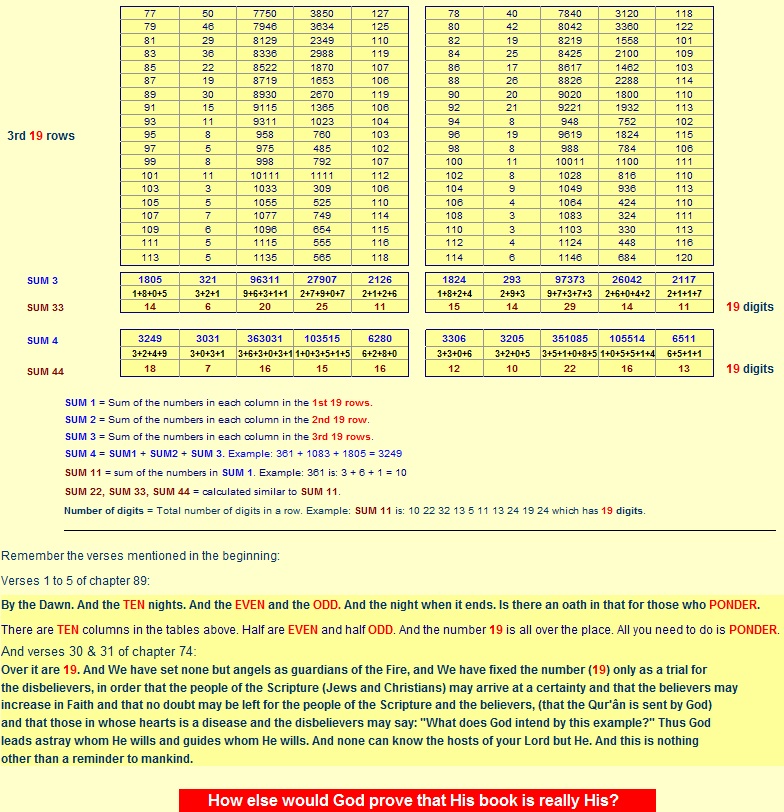
for more combinations in the table see this link here
http://www.amazing19.com/
